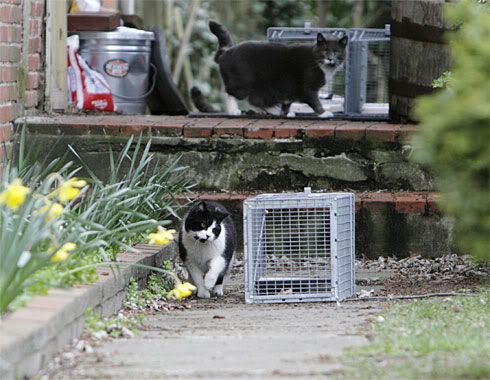 The free-roamers with an aversion to humans have grabbed headlines this spring because of a bounty on their heads in Iowa, a threatened roundup and disposal in Fairfax County, Va., and other elimination plans across the country.
The free-roamers with an aversion to humans have grabbed headlines this spring because of a bounty on their heads in Iowa, a threatened roundup and disposal in Fairfax County, Va., and other elimination plans across the country.But the cats also are receiving attention of a different sort.
Grass-roots groups and animal-welfare organizations are directing money and energy toward helping the tens of millions of feral cats that skulk about college campuses, cluster around back-alley trash bins, swarm among the rocks at beach communities and colonize the nether-reaches of suburban parks, military installations and abandoned barns and fields.
According to Neighborhood Cats, a "feral" cat is one who has reverted in some degree to a wild state. They originate from former domestic cats who were lost or abandoned and then learned to live outdoors or in environments involving little human contact.
TNR (trap/neuter/return) respects a feral cat's wild state. The neutering of the ferals prevents tremendous suffering and shields the cats from the hostility their behavior might otherwise draw from human neighbors. But the return of them to their own territory and the providing of adequate food and shelter gives them the opportunity to live among their own, to be free and to answer to their own unique natures.
This method thwarts future litters and reduces the yowling, spraying and fighting that annoy humans. In the process, the cats usually are vaccinated, treated for minor problems and given a notch in the ear to identify they are sterile. Over time, the colony will grow smaller through attrition.
For a list of organizations with programs to benefit feral cats, see the USA Today article, Compassion often eludes feral cats; groups out to save them, by Sharon L. Peters.
Photo: Joan Fairman Kanes for USA TODAY
0 comments:
Post a Comment